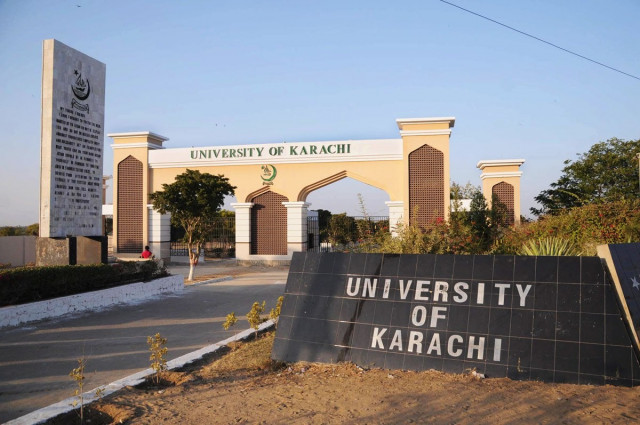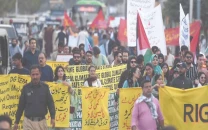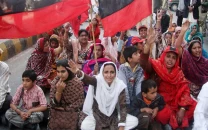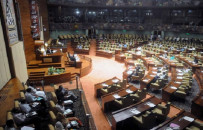Exploring space technology at Karachi University
Experts, academics speak at National Conference on Space Science and Technology

University of Karachi. PHOTO: MOHAMAMD NOMAN/EXPRESS
Space science has made the world a global village and revolutionised the communication system, he said while addressing the inauguration ceremony of the fifth National Conference on Space Science and Technology titled ‘Exploring New Worlds in Space’. The conference was organised by the varsity’s Institute of Space and Planetary Astrophysics (ISPA) as part of Space Week celebrations around the world.
“Space science development has played a pivotal role in human development; its broader fields having diversified prospects,” he said.
Dr Khan congratulated the director of the institute for organising the conference. "We should generate funds through national and international research projects and, with the collaboration of industries, we should conduct high-quality research," he suggested.
SUPARCO’s World Space Week celebrations are out of this world
Chief guest at the event National Centre for Physics (NCP) Director-General Dr Hafeez Hoorani informed the audience that the NCP published more than 300 research papers in 2017 and spoke about the Nobel Prize on gravitational waves. ISPA Founding Director Prof Dr Jawaid Quamar discussed the importance of space science and technology. The institute’s director, Prof Dr M Jawed Iqbal, gave the welcome address at the event.
Presenting his research paper during one of the technical sessions at the conference, Prof Dr Muhammad Shahid Qureshi from the ISPA, said that the 21st century has already witnessed major space explorations and that Pluto, Saturn, Jupiter and two of the major objects in the asteroid belt are going to be very closely scrutinised, adding that this is unparalleled in the history of science and technology.
Technologies for propulsion through nonconventional means are being explored and put to work in a way that will exponentially increase speeds of space probes, he explained. Hence, the time required to reach distant objects within and outside the solar system will be reduced significantly, said Dr Qureshi. Telecommunication is going through a revolution as the speed of communication has increased and broadband width is ensuring huge data transfers in shorter periods of time. Satellites are playing vital and ever increasing roles for civil, technological and strategic purposes, he said.
"Our major concern is where we stand as a nation and community in this rapidly growing use of space science and technology for various purposes?” questioned Dr Qureshi. “Space science and technology has proved more significant than nuclear science and technology. And there we lag behind many other countries,” he lamented.
President Mamnoon reaches Astana for OIC summit on science and technology
“Thus our national priorities must include sufficient investment in the development of infrastructure as well as educational institutions in the field of space science and technology," Dr Qureshi added.
Dr Ihtzaz Qamar from Institute of Space Technology, Islamabad said that the human quest for space exploration coupled with instinct to defend oneself with advanced weapon systems opened a new frontier of science and technology called rocket propulsion. Since the development of the first rocket by Rober H Goddard in 1926 we have seen tremendous advancements, he told participants.
He cited the first spaceship landing on the moon in 1959 and current interplanetary missions, rocket propulsion, its fundamental principles, different kinds of rocket propulsion systems as examples of this.
Mahrukh Farooq from ISPA and Madiha Talha from SUPARCO while presenting their research paper said that geomagnetism, the study of Earth's magnetic field, through history has a greater impact and wide applications in different aspects of science and technology. Earth's magnetic field consists of internal and external components, they explained, adding that the internal field, which makes up 90% of the total field, also called main magnetic field, has its origin at the centre of the Earth. This field is fairly steady when measured over time periods of days or months but its changes are quite significant when measured over periods of years and centuries, said the researchers.



















COMMENTS
Comments are moderated and generally will be posted if they are on-topic and not abusive.
For more information, please see our Comments FAQ